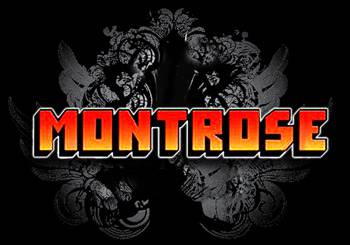One of the first American-bred hard rock groups to challenge British supremacy in the early '70s, Montrose is still remembered as, if not the most successful, certainly one of the most influential bands of the era. In fact, many of the personalities responsible for the group's legendary, self-titled debut (producer Ted Templeman, engineer Don Landee, vocalist Sammy Hagar) would later become instrumental players in the formative and later-day career of the mighty Van Halen. And to his credit, though he ultimately lacked the focus and leadership skills to consistently guide his band's career, guitarist Ronnie Montrose was a true original of the instrument. His superlative playing aside, the avid big game hunter lived the double-entendre guitar-playing gunslinger lifestyle long before Ted Nugent made the combination famous.
After cutting his teeth as a session musician with the likes of Van Morrison and the Edgar Winter Group, guitarist Ronnie Montrose decided to form his own, self-named band in 1973. Enlisting the help of fellow session pros Bill Church (bass), Denny Carmassi (drums), and a talented, up-and-coming Californian singer named Sammy Hagar, Montrose soon released their eponymous first album in November of that year. Although it never broke the Billboard Top 100, Montrose eventually went platinum and was arguably the first full-fledged heavy metal album by an American band (early proto-metal efforts by Blue Cheer and Steppenwolf notwithstanding). With classics like "Space Station No. 5" and "Bad Motor Scooter" leading the charge to the nation's airwaves, it is still considered one of the finest, most influential releases of the decade, to boot. But trouble was already looming, as Church quit the group soon after and was replaced by bassist/keyboard player Alan Fitzgerald for the ensuing tour. Released less than a year after their debut, the erratic Paper Money proved to be a surprisingly diverse but unfocused follow-up that failed to match its predecessor's consistency or popularity. Making things worse, escalating tensions between Montrose and Hagar soon led to the latter's departure following the Paper Money tour. He went on to an increasingly successful solo career, and, of course, eventually Van Halen.
Hagar's replacement was relative newcomer Bob James, but it was new full-time keyboardist Jim Alcivar who quickly placed his stamp on the group's appropriately titled third album Warner Bros. Presents Montrose!. Released at the tail end of 1975 and produced by Ronnie himself, its pedestrian songwriting and generally plodding, tepid sound alienated what was left of the band's remaining faithful and led to Fitzgerald's departure soon after (he later became a member of Night Ranger). New bassist Randy Jo Hobbs performed on Montrose's last-ditch effort, 1976's Jack Douglas-produced Jump on It. Also poorly received and boasting a ridiculously ill-fated album cover to match, it never had a chance and the musicians soon went their separate ways. Carmassi joined Hagar's solo band (also featuring Bill Church by then) and later played with Heart and many others. As for committed outdoorsman Ronnie Montrose, the guitarist took some time off to enjoy his other hobbies before releasing three albums with new band Gamma in the early '80s. He would finally record under the Montrose name once again for 1987's Mean, a one-off affair featuring singer Johnny Edwards (later, briefly of Foreigner), bassist Glenn Letsch, and drummer James Kottak (soon to form Kingdom Come, and eventually a member of the Scorpions).
In early 2002, Ronnie Montrose gathered bassist Chuck Wright (Quiet Riot), drummer Pat Torpey (Mr. Big) and singer Keith St. John (Burning Rain) for a new Montrose lineup. They played West Coast dates throughout the year in support of their Rhino compilation The Very Best Of Montrose. Plans for a studio album were in the works for 2003.
Montrose biography courtesy of All Music Guide
Source : http://www.headpins.net/ccr/roster/Montrose.shtml


